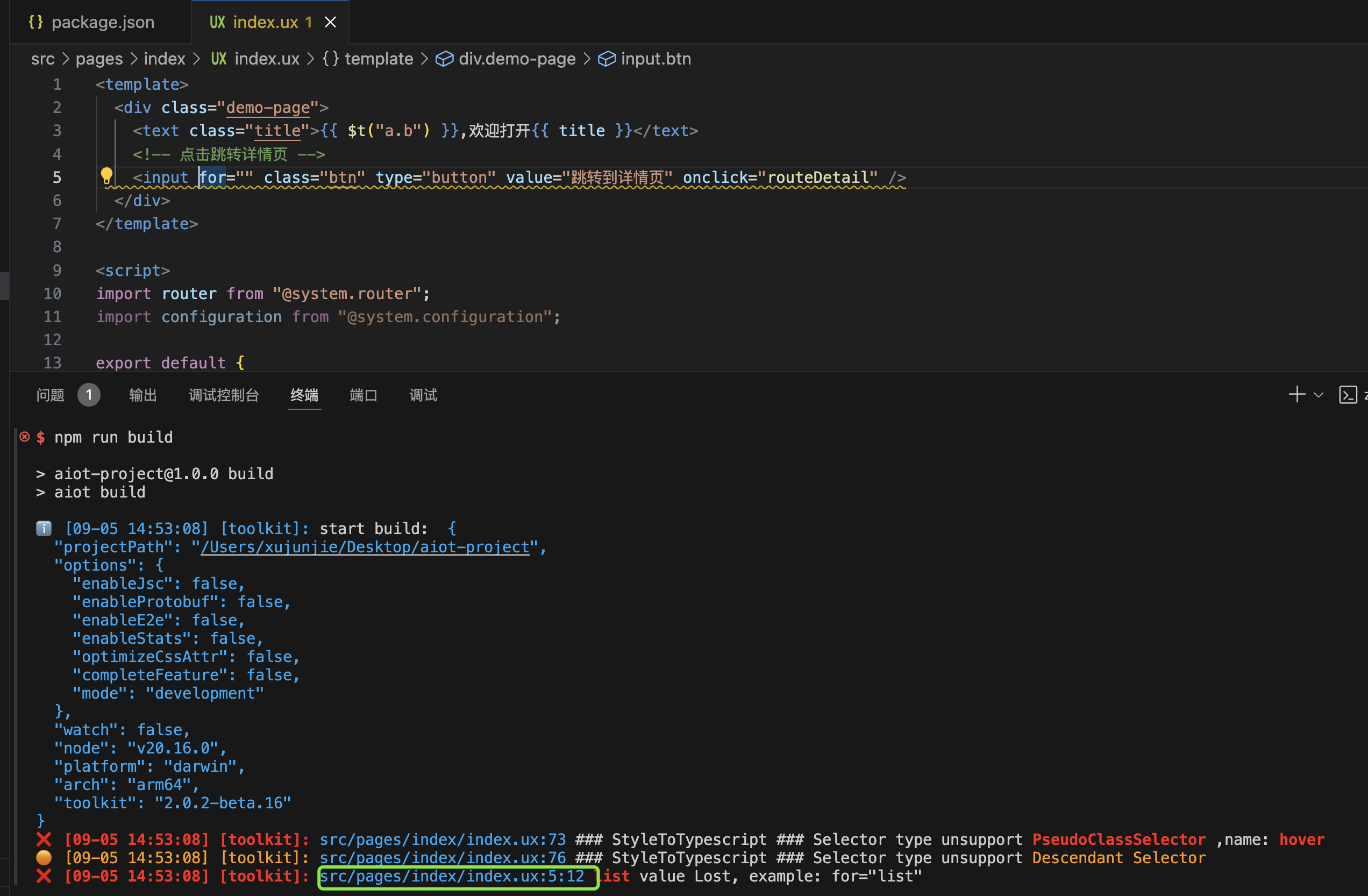# AIoT-toolkit
When developers are working on the Xiaomi Vela JS application project, AIoT-IDE primarily uses the AIoT-toolkit built into the project template to complete the project compilation and construction tasks, resulting in build files (named with the rpk suffix, e.g., com.application.demo.rpk).
# Functional Support
The AIoT-toolkit is a command-line tool that converts source code projects into target code projects and generates target code applications, while also providing emulator-related functions for developers. The AIoT-toolkit enables independent development of Xiaomi Vela JS applications without relying on AIoT-IDE. Without using AIoT-IDE, developers can fully utilize the AIoT-toolkit for development via command-line tools. The latest AIoT-toolkit2.0 currently offers the following common commands:
- Create a project: npm create aiot
- Run directly: aiot start. The first run will prompt you to create an emulator; follow the instructions.
- Build the project to generate an rpk: aiot build
- Build the project in release mode: aiot release
- Get a list of connected devices: aiot getConnectedDevices
- Get setting platforms: aiot getPlatforms
- Create a
Xiaomi Vela JSemulator: aiot crateVelaAvd - Delete a
Xiaomi Vela JSemulator: aiot deleteVelafangAvd
# Version Support
Currently, AIoT-IDE supports AIoT-toolkit1.0 and AIoT-toolkit2.0, with a minimum supported version of 1.0.18 for AIoT-toolkit1.0 and 2.0.x for AIoT-toolkit2.0. The latest version of AIoT-IDE, 1.6.0, recommends using 2.0, which offers faster compilation speeds and hot update support, providing developers with a better development experience.
When AIoT-IDE opens a Xiaomi Vela JS application, it actively checks the version of AIoT-toolkit. If the current project uses AIoT-toolkit1.0, it will prompt you to upgrade and view the migration documentation, as shown in label 1 below:

If your project uses AIoT-toolkit2.0 but not the minimum official version supported by the current AIoT-IDE, it will forcefully prompt you to upgrade, as shown in label 1 below:

# Functional Optimization
Compared to AIoT-toolkit1.0, AIoT-toolkit2.0 offers the following significant improvements:
- Complex functions can be directly written in template syntax.
<div
id="{{(x=> x+ y)(1)}}"
onclick="(evt)=>{
const x = 10;
return sum(x, evt, y)
}">
</div>
- Variables in class can contain multiple class names (previously, each variable could only contain one class name).
class="a {{x}}" // x="a1 a2 a3"
- Style can be a string or an object (previously, it was only an object).
<div style="a{{b}}c">
</div>
- The order of styles can be written arbitrarily (previously, a fixed order was required).
border: solid red 10px;
- Error prompts are located by row and column.

